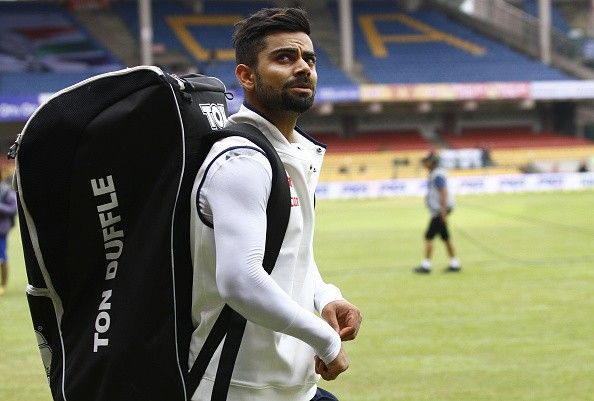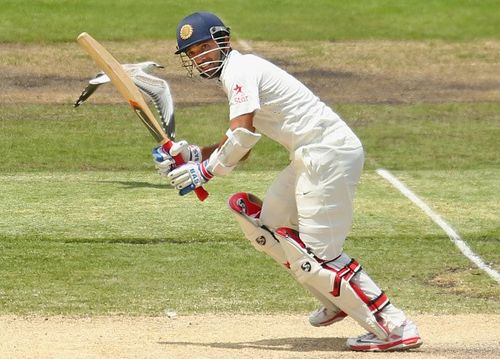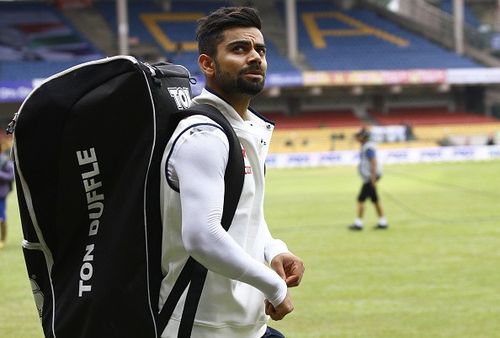
Are the Indian batsmen missing out on precious runs at home?
The opening day of the third Test at the VCA Stadium in Nagpur was once again dominated by the slower bowlers as South Africa dismissed India for 215 before losing two wickets themselves to end Day One at 11 for 2.
7 of the 13 wickets that fell on the opening day went to the spinners but in between that, there was also a gem of a spell from Morne Morkel who looked the part as far as the pacers were concerned, troubling all the Indian batsmen on a slow pitch and finishing with figures 16.1-3-35-3 before having to leave the field due to an injury.
The hosts will once again be disappointed with their batting performance today after skipper Virat Kohli won the toss and opted to bat. None of the Indian batsmen managed to reach even the 50-run mark during the innings with the highest score being 40 by Murali Vijay.
Over the course of the last few weeks, there has been a lot of a talk of whether the home side can fully make use of the various advantages that they have at their disposal. This writer, himself, had spoken about how there was absolutely nothing wrong in playing to your strengths.
But with yet another Indian batting failure on Wednesday, another pertinent question has been raised, which is that while on one front the spinners have made merry on helpful surfaces, have the batsmen missed out on precious home runs?
Have India, in trying to look to pick up 20 wickets almost everytime, compensated on putting up big scores on the board?
Seam and swing all over
The present Indian batting line-up over the course of the last 24 months has played in every type of track around the world. The seaming conditions of South Africa, the cold and helpful conditions in New Zealand, the swinging conditions of England and the bouncy pitches of Australia.
Despite having some hiccups initially, the batsmen put up commendable performances in each of the four assignments, thereby further confirming that there was indeed a lot to look forward to from this set of batsmen as far as the longer format was concerned.
But the same can't be said about this line-up on home conditions. The likes of Kohli, Ajinkya Rahane, who will be wondering what he needs to do taste success at home, haven't quite fired regularly in home conditions and whenever, we see a batsmen’s graph, along with his exploits in overseas conditions, we also put up their scores, averages etc at home too.
Are India overdoing it and is it time to go back to the tried and tested method?
The Brabourne Stadium will always hold a special place in Indian cricket, for this was the place where India became World No.1 in Tests after beating Sri Lanka in 2009. Harbhajan Singh had this to say about the wicket used for that particular game:
“It’s a good track to bat and bowl on. Today, one batsman got a century and another is batting on 86. Whenever the seamers bowled in the right areas, something happened, and the spinners also enjoyed the bounce. This is the kind of wicket Test cricket should be played on.”
Now there is always so much talk of putting forth a ’sporting track’ for a Test match in India. But unfortunately, our curators always mistake that for a pitch that offers extreme assistance to the fast bowlers.
Harbhajan had also said during one of the Ranji Trophy matches last year that on seaming pitches, even bowlers who bowl at 120 kph seem like Malcolm Marshall.

Kohli has come out in the past and reiterated several times that it is the bowlers who win Test matches by taking 20 wickets. Fair point. But to expect a bowling attack to always deliver after the batsmen have let them down is like asking Bachendri Pal to climb the Mt. Everest almost every other week.
India should understand that it is also up to the batsmen to put up competitive, if not big first innings scores in order to give some comfort for the bowlers. Ask a Glenn McGrath when he came out to bowl how he felt when the Australian batting line-up put up big scores in the first innings or ask an Anil Kumble as to how he felt when India did well with the bat. A four or six wouldn't matter as much as it would while defending a low total, in that case.
It would be better off if India take a cue out of the wicket at the Brabourne Stadium wicket and opt for pitches where it suits the quicker bowlers early on, then becomes better for the batsmen before eventually wearing out and assisting the spinners.
Such a track would be good not just for two of the three components of the game - batting and bowling - but it will also give the spectators who are watching the action something to cheer about on almost all five days.
India has yet another good stretch of home matches next year and hopefully they learn vital lessons from this series and correct them next year.
